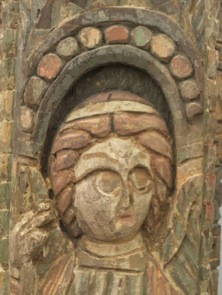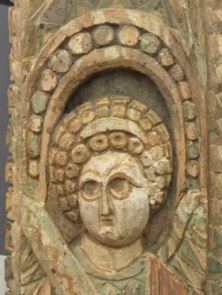Monasticism provided an inspirational environment for the production of sophisticated art. Popular stories from the Bible embellished the walls of monks’ cells, churches and refectories. Extraordinary remains of Coptic monastic architecture have been recovered from many towns and pilgrimage sites across Egypt and reveal an architectural mastery during the Coptic era, contrary to what could be imagined for a life devoted to prayer and contemplation. Recent excavations at the Monastery of St. Apollo at Bawit vividly exemplify the many fascinating Coptic monuments still to be recovered from Egypt’s monastic sites.

This sketch shows at least 14 half-figures of men, identifiable as watchmen or
monks. One figure is entitled My brother Menas the mason. Wallpainting from
the “Watchmen’s Chamber”, Monastery of St. Jeremias in Sakkara. Date unknown.

Stone friezes have been recovered from various sacred sites and are decorated with intricate designs such as floral, geometric and animal motifs. 5th – 6th century AD.


Recent discoveries from the Monastery of St. Apollo in Bawit: Two wooden sculptures representing the archangels Michael and Gabriel. First half of the 7th century AD.
<< previous | next >>